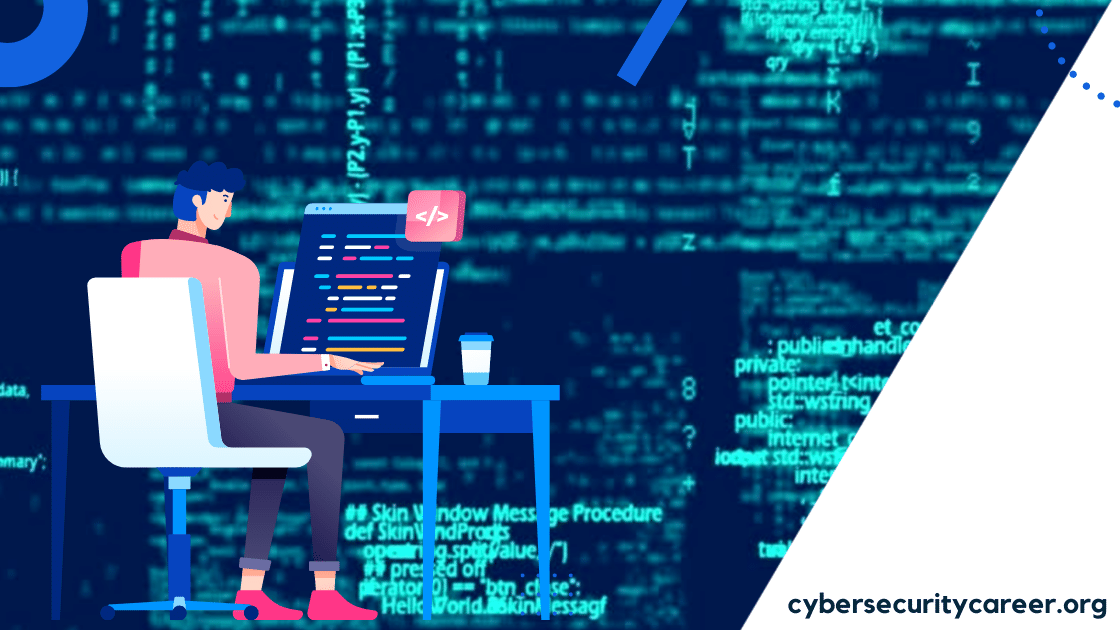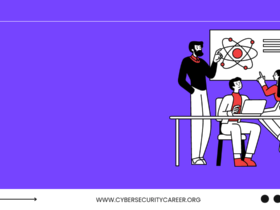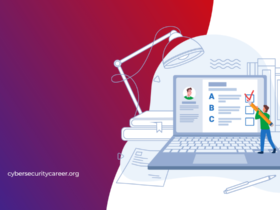Cyber security is a hot topic these days, and for good reason. The reality is that cyber attacks are on the rise, and businesses of all sizes are at risk. In this blog post, we’re going to take a look at ten hacks and cyber security threats of 2023. From ransomware to drone attacks, read on to learn what you need to be aware of in order to protect your business from the dangers of the internet.
Hackers will target your personal information
Cyber security threats are on the rise and hackers are targeting personal information to gain access to your online accounts and financial information. Here are some of the most common hacking techniques:
Phishing emails: Cyber criminals use fraudulent email complaints as a way to trick you into providing personal information, such as your login credentials or bank account numbers. Always be suspicious of unsolicited email messages, and never give out any personally identifying information unless you’re sure who you’re talking to.
Anonymous browsing: If you’re not careful, your browser histories can easily be tracked and accessed by cyber criminals looking for sensitive data, like login credentials for online accounts or supplier credit card numbers. Always use a secure password and keep track of which websites you’ve visited in order to protect yourself from this type of attack.
Cracking open security seals: Once hackers have gained access to your computer or online account, they can often find ways inside through weak security seals, such as passwords that are easily guessed or forgotten. Regularly change passwords, sign up for two-factor authentication (a technique that requires both a password and a physical token such as a key fob), and install antivirus software to help protect your computer against viruses and other malware.
Malicious links: Links in emails, texts, social media posts, and even ads can lead unwitting users straight to malicious websites where they can be infected with viruses or other malware.
To keep your personal information safe online, make sure you:
- Use a strong password and change it regularly
- Stay up to date on the latest security threats by signing up for alerts from your antivirus software or online security company
- Keep your browser histories private by using a secure password and disabling cookies
- Never give out personal information such as login credentials or financial information without verifying who you’re talking to
To learn more about cyber security threats and how to protect yourself, visit the Cybersecurity Resources section of our website.
You could be hacked through your phone
- You could be hacked through your phone.
- Hackers are becoming more Advanced and Sophisticated.
- There are several ways hackers can breach your phone security, including phishing emails, accessing private data through unsecured apps, and even gaining access to your device by exploiting software vulnerabilities.
- Always be vigilant against possible cyber threats and remember to keep your devices up-to-date with the latest security patches!
Social media could be used to spread fake news
Social media could be used to spread fake news. This is especially a problem during political elections where people may be more likely to believe information that is broadcast on social media instead of from official sources. Some examples of fake news include stories about the election being rigged, false reports about terrorist attacks, and information that is misleading or false about major events.
There are many ways that social media can be used to spread fake news. Some examples include using bots to post comments on online articles, using hashtags to promote specific content, and creating fake accounts to share content. Social media platforms also have their own algorithms which can help disseminate certain types of content over others.
Fake news can have a significant impact on society. For example, it can lead people to believe in false conspiracy theories, increase tension between different groups of people, and damage relationships between people. Additionally, fake news can have a financial cost as it can lead to investments being made based on false information.
Phishing attacks could ensnare you
Phishing attacks are a type of cyber attack that involve tricking people into revealing personal information such as their credit card numbers. They’re often used to steal user identities and other confidential information. Phishing attacks can also be used to install malware on your computer or spy on your online activity.
To avoid being phished, be suspicious of emails that ask you to provide personal information. If you don’t know the sender, don’t reply to the email. If you do respond, be sure to double-check the information you give them before submitting it. Also, keep an eye out for any strange or unexpected changes to your computer or online security settings. If you think you’ve been hacked, take action by contacting your computer manufacturer or cyber security specialist.
Malware could infect your computer
- Malware could infect your computer If you visit a malicious website, or open an email attachment that is not from a trusted source, your computer could be infected with malware. This type of malware can track your every move on the internet and steal personal information, including passwords and financial data.
- Cyber security threats are on the rise In recent years, cyber security threats have increased significantly. Hackers are now using increasingly sophisticated methods to attack computer systems and steal sensitive information. These threats can come in the form of viruses, spyware, and hackers themselves.
- There is no guarantee of safety online The best way to stay safe online is to use common sense when surfing the internet and to keep up-to-date on the latest in cyber security threats. However, there is no guarantee that your computer will never be attacked or compromised in some way. Always remember to take measures to protect yourself, such as installing anti-virus software and updating your security settings regularly.
Identity theft could occur
- Identity theft could occur if someone steals your personal information, such as your name, Social Security number, or bank account number.
- Hackers could use your personal information to open new accounts in your name or to steal money from your bank account.
- Your computer may be infected with a virus that can steal your private information, such as passwords and financial records.
- Criminals could use your personal information to open new accounts in your name or to commit other crimes.
- You can protect yourself from these threats by using strong passwords and security measures on your computer and online accounts.
Top 10 hacks and cyber security threats of 2023
- Widespread cyberattacks that cause large-scale disruption and damage
- Emergence of new malware strains that can exploit vulnerabilities in devices and systems
- Increased use of fake news and propaganda to discredit opponents or manipulate public opinion
- Continued exploitation of data breaches to gain unauthorized access to sensitive information
- Growing reliance on online services and digital infrastructure, which makes them more vulnerable to attack
- Proliferation of hacking campaigns waged by state-sponsored actors seeking to target critical infrastructure
- Continued development of quantum computing technologies that could enable attackers to breach security protocols
- Encryption technology becoming less effective as algorithms are broken more easily by hackers
- More sophisticated and deceptive mobile botnets that can be used for theft or espionage purposes
- Rapid expansion of internet-of-things devices, which increase the potential for device compromise and cyberattacks
1. Malware Attack
Cyber security threats continue to haunt businesses, as hackers and malware developers target systems in order to extract information or hold organisations hostage. Here are some of the top hacks and cyber security threats of 2018:
- WannaCry: This ransomware attack infected thousands of computers around the world and caused substantial damage, as victims were stuck with a message demanding payment in bitcoins for access to their files.
- NotPetya: This ransomware attack spread quickly through Ukraine in May 2017, causing massive disruption to businesses and government agencies.
- Equifax hack: This major data breach at Equifax exposed the personal data of millions of Americans, including social security numbers, dates of birth and addresses.
- Mirai botnet: This large hacker network was used in attacks against Dyn and Ashley Madison in late 2016 and early 2017 respectively, which disrupted public services across the globe.
- Bad Rabbit ransomware: This new strain of malware began spreading in March 2018, encrypting files on infected computers before requesting a ransom be paid in cryptocurrency bitcoin.
2. Phishing Attack
Phishing attacks are a common form of cyber-attack. A phishing attack is a type of cyber-attack in which an attacker attempts to obtain sensitive information by masquerading as a legitimate entity in order to exploit the trust of the target. Phishing attacks can take many forms, including email spoofing, online scams, and social engineering. Phishing attacks can be perpetrated by malicious individuals or organizations seeking to steal sensitive information or gain access to personal accounts. In 2017, phishing attacks accounted for more than half of all data breaches reported to cyber security companies.
There are many different types of phishing attacks, but all share one common goal: to deceive the victim into revealing confidential information. The most common form of phishing attack is email spoofing; attackers send out emails that appear to be from a trusted source, like a bank or social media site, but contain malicious content that tricks the victim into revealing their username and password. Other popular types of phishing attacks include online scams, where criminals try to trick victims into giving up their personal information (like account numbers or passwords), and social engineering, where attackers use methods like charm and deception to convince victims to give away their personal information.
One way to protect yourself against phishing attacks is to be aware of the signs that your email is being spoofed and don’t click on any links in suspicious emails. You can also install antivirus software on your computer and keep updated with the latest security threats so you’re prepared if a phishing attack is attempted. Finally, be proactive about protecting your online identity by using strong passwords and updating your security settings on all of your accounts.
3. Password Attack
Password attacks are on the rise and they’re becoming increasingly more sophisticated. Businesses need to take steps to protect themselves from these attacks and ensure their users’ privacy is protected.
Password attacks can come in many different forms, but all of them rely on exploiting a vulnerability in a user’s authentication process. Some common vectors for password attack include social engineering (convincing someone to reveal their login credentials), phishing (attacking people via email with fake links), and malware that gains access to passwords through vulnerabilities in browsers or operating systems.
One of the most common types of password attack is brute force guessing, which is when an attacker tries every possible combination of characters in a user’s login name or password. In some cases, attackers also employ automated techniques known as “scrapers” that collect login data from websites and turn it into usable passwords.
To prevent yourself from being attacked bypassword thieves, make sure you use strong passwords that are unique to each website and don’t reuse the same passwords across multiple sites. You can also protect yourself by using two-factor authentication (2FA) on any important accounts that require authentication, such as your bank account or email accounts. 2FA uses an additional layer of security beyond just your password, so if your password is compromised, someone would still need access to your second factor before they could exploit your account credentials.
4. Man-in-the-Middle Attack
In today’s world, hackers are a real threat. They can attack your computer, steal your personal information, and even interfere with your online activities. Here are some of the top hacks and cyber security threats of 2018.
1. Man-in-the-Middle Attack
A man-in-the-middle attack occurs when an attacker intercepts communications between two parties without either party knowing it. This type of attack is especially dangerous because it allows the attacker to eavesdrop on communications, steal data, and even hijack web sessions.
2. Spearphishing Attacks
Spearphishing attacks involve sending malicious emails with links that trick users into opening the emails in order to steal their login credentials or other sensitive information. This type of attack is particularly common among malicious actors looking to gain access to user accounts and sensitive data.
3. Cybersecurity Risks Associated With Smartphones and Mobile Computing Devices
Smartphones and mobile computing devices are increasingly being used as platforms for conducting cyberattacks. These devices often have weak security measures, which makes them vulnerable to infiltration by malicious actors looking to exploit vulnerabilities for financial gain or for other nefarious purposes.
4. Cross-Site Scripting (XSS) Attacks
Cross-site scripting (XSS) attacks involve injecting malicious code into webpages that is executed by unsuspecting users who visit the page containing the code. This type of attack can enable attackers to steal user credentials, install malware on victims’ computers, or perform other malicious activities.
5. DNS Attacks
DNS attacks involve hijacking the Domain Name System (DNS) servers used by users to access websites and other online resources. This type of attack can redirect users to fake websites or malware sites, steal their personal information, or even hijack their online sessions.
6. Cybersecurity Risks Associated With Social Media Sites
Social media sites are increasingly being used as platforms for conducting cyberattacks. These sites often have weak security measures, which makes them vulnerable to infiltration by malicious actors looking to exploit vulnerabilities for financial gain or for other nefarious purposes.
7. Cybersecurity Risks Associated With Online Shopping Sites
Online shopping sites are increasingly being used as platforms for conducting cyberattacks. These sites often have weak security measures, which makes them vulnerable to infiltration by malicious actors looking to exploit vulnerabilities for financial gain or for other nefarious purposes.
8. Cybersecurity Risks Associated With Online Banking Sites
Online banking sites are increasingly being used as platforms for conducting cyberattacks. These sites often have weak security measures, which makes them vulnerable to infiltration by malicious actors looking to exploit vulnerabilities for financial gain or for other nefarious purposes.
5. SQL Injection Attack
SQL injection is a cyber security attack where malicious input is inserted into a database query or authentication string to hijack the victim’s account. This type of attack can be very damaging, as attackers are able to access and alter data, including user accounts, passwords, and other sensitive information.
One of the most common ways that SQL injection attacks are executed is through the use of search engines. When conducting a search on the internet, it’s important to be aware of the website’s security measures and how they’re implemented. For example, many popular Google searches include built-in search engines for finding news articles, reviews, pictures, and more. However, if you’re looking for malicious content on Google, you may be in for a surprise. Instead of results that would lead you to sites that would endanger your computer or steal your personal information, many Google search results will offer you links to pages that contain SQL injection flaws.
If you’re ever unsure whether a particular website is safe to visit or not, it’s always best practice to stay informed about current cyber security threats and how you can protect yourself from them. By following some simple safety tips and using common sense when surfing the internet, you can prevent yourself from becoming a victim of a SQL injection attack.
6. Denial-of-Service Attack
Denial-of-Service (DoS) attacks are one of the most common forms of cyber attack. They involve flooding a targeted system with so many requests that it can no longer function. This can be done through requests for specific resources, like IP addresses, or by sending traffic in an overwhelming amount.
These attacks can be carried out by anyone with an internet connection and some knowledge of how to use the Internet. They’re also relatively easy to carry out, which is why they’re so popular among attackers.
DoS attacks are usually used as a way to disrupt a system or cause damage. They can also be used to scare people into thinking their system is being attacked when it’s not, or to hold victims hostage until they pay ransom.
There are several ways to protect yourself from DoS attacks. You can install security software that will help identify and block spam traffic, keep your systems up-to-date with the latest virus protection software, and keep an eye on your network traffic for signs that something might be wrong.
7. Insider Threat
1. Cybersecurity is a top priority for organizations of all sizes. Cyber attacks are on the rise, and hackers are getting more sophisticated every day. Here are some of the top hacks and cyber security threats of 2013 so far:
-A large data breach at Target resulted in the theft of 40 million records. The attack was carried out by two people who were able to gain access to Target’s computer systems through compromised passwords.
-An attack on Sony Pictures led to the release of confidential information about celebrities, including their email addresses, birth dates, phone numbers, and social media accounts. The attack was attributed to North Korea.
-A hacker stole information from more than 100,000 PlayStation Network users around the world. This attack led to the cancellation of a PlayStation game release in Japan and other countries.
-A cyberattack against HBO caused service disruptions for its customers in Europe and North America. The attack was believed to be perpetrated by hackers working for Iran or Russia, although no clear motives have been identified yet.
8. Cryptojacking
Cryptojacking is a type of cyberattack where hackers exploit cryptocurrency mining software on devices to unfairly generate digital income. This allows them to operate without the consent of the owners of the devices, which can lead to data theft and other types of cyberattacks.
In 2016, cryptojacking caused $19 million in losses globally. In 2017, that number rose to $97 million. And in 2018, cryptojacking was responsible for $273 million in damages.
Here are five of the top hacks and cyber security threats that you need to be aware of:
- The WannaCry ransomware attack: This attack swept across Europe and North America in May 2017, infecting more than 200,000 computers. The virus encrypted files on victims’ machines and demanded ransom payments from their owners in order to release them. WannaCry was largely responsible for bringing bitcoin prices down by 40 percent during its peak hours.
- Equifax data breach: In July 2018, Equifax disclosed that credit card numbers and social security numbers of more than 143 million Americans had been illegally accessed by hackers. The company has since faced scrutiny over its handling of the incident and its decision not to reveal it earlier. As a result, Equifax stock prices have plummeted by nearly 60 percent since the news broke.
- Spectre and Meltdown vulnerabilities: These two vulnerabilities were discovered in early 2018 and allow hackers to access sensitive information from processors such as CPUs and GPUs through software code. Intel and AMD have since issued patches to protect their customers, but the vulnerabilities still exist.
- DNS hijacking: This type of attack allows hackers to redirect victims’ internet traffic to malicious websites or phishing sites. In September 2018, a DNS provider called Dyn was accused of aiding the Russian government in redirecting millions of users to fake websites in order to interfere with the 2016 U.S. presidential election.
- The Mirai botnet: This massive cyberattack began in late 2016 and targeted devices such as smart TVs, routers, and even cars. The botnet was used to launch attacks on companies such as Spotify, Sears, and Amazon that resulted in widespread outages.
9. Zero-Day Exploit
Zero day exploit refers to an attack that exploits a previously unknown vulnerability in a software or system. Zero day exploits are valuable and coveted because they allow attackers to execute malicious code with complete impunity, before the vendor has had a chance to patch the vulnerability.
As cyber security threats evolve, so too do the methods used to exploit vulnerabilities. In 2016, hackers exploited a critical flaw in Adobe Flash Player that was being actively exploited by malware authors. This particular zero day exploit was not uncovered until after it had already been used in attacks against unsuspecting users.
In 2017, another zero day exploit affecting Microsoft Windows was discovered and used to spread ransomware. This type of attack can have devastating consequences for organizations who are unable to restore affected systems quickly enough.
Because Zero Day Exploits are so rare and valuable, cyber criminals are constantly searching for new ways to use them in attacks against vulnerable systems. In fact, according to Symantec research, more than 50% of all detected cyber attacks involve probing for vulnerabilities before launching an attack.
10. Watering Hole Attack
Watering hole attacks are a type of cyber attack that attempt to exploit vulnerabilities in websites frequented by specific groups of people. These attacks are often conducted by hackers who know about the target site’s vulnerabilities, and use them to harvest information from users who visit the site.
There are a number of ways that watering hole attacks can be successful. One tactic is to use social engineering techniques to trick users into revealing their personal information. Another is to exploit vulnerabilities in the website’s security system, allowing attackers access to user data or systems on the site.
While watering hole attacks are not new, they continue to be a major threat because they allow attackers access to valuable data from unsuspecting users. As website owners learn about watering hole attacks and how to prevent them, they will become less likely to fall victim to this type of attack.
How to Prevent Cyber Attacks?
1. How to Prevent Cyber Attacks?
Cyber security is one of the most important aspects of protecting your business from cyberattacks. There are a number of ways you can prevent cyber attacks from happening, and some tips for how to deal with them if they do happen.
2. Keep Your Network Secure
One of the best ways to prevent cyberattacks is to keep your network secure. Make sure that all devices on your network are up-to-date and patched, and that all users have strong passwords and security protocols in place. Install firewalls and intrusion detection systems (IDS) to detect malicious activity on your network.
3. Educate Your Employees
Employees are a key part of any cyber security strategy. Make sure that they know how to use cybersecurity protocols, and train them on how to identify potential threats. Teach them how to report incidents quickly and effectively, so you can take action before a malicious attack becomes more serious.
4. Stay Updated on Cyber Threats
Stay updated on the latest cyber threats by subscribing to industry blogs and reading news articles about online security issues. This will help you stay ahead of the curve when it comes to thwarting possible attacks.
Conclusion
Looking to stay ahead of the curve in cyber security? Check out our top 10 hacks and cyber security threats of 2023 below! From ransomware to data breaches, these are sure to be some of the biggest stories of the year. Make sure you are up-to-date on your cybersecurity practices so that you can keep your business safe from potential harm.










Leave a Reply